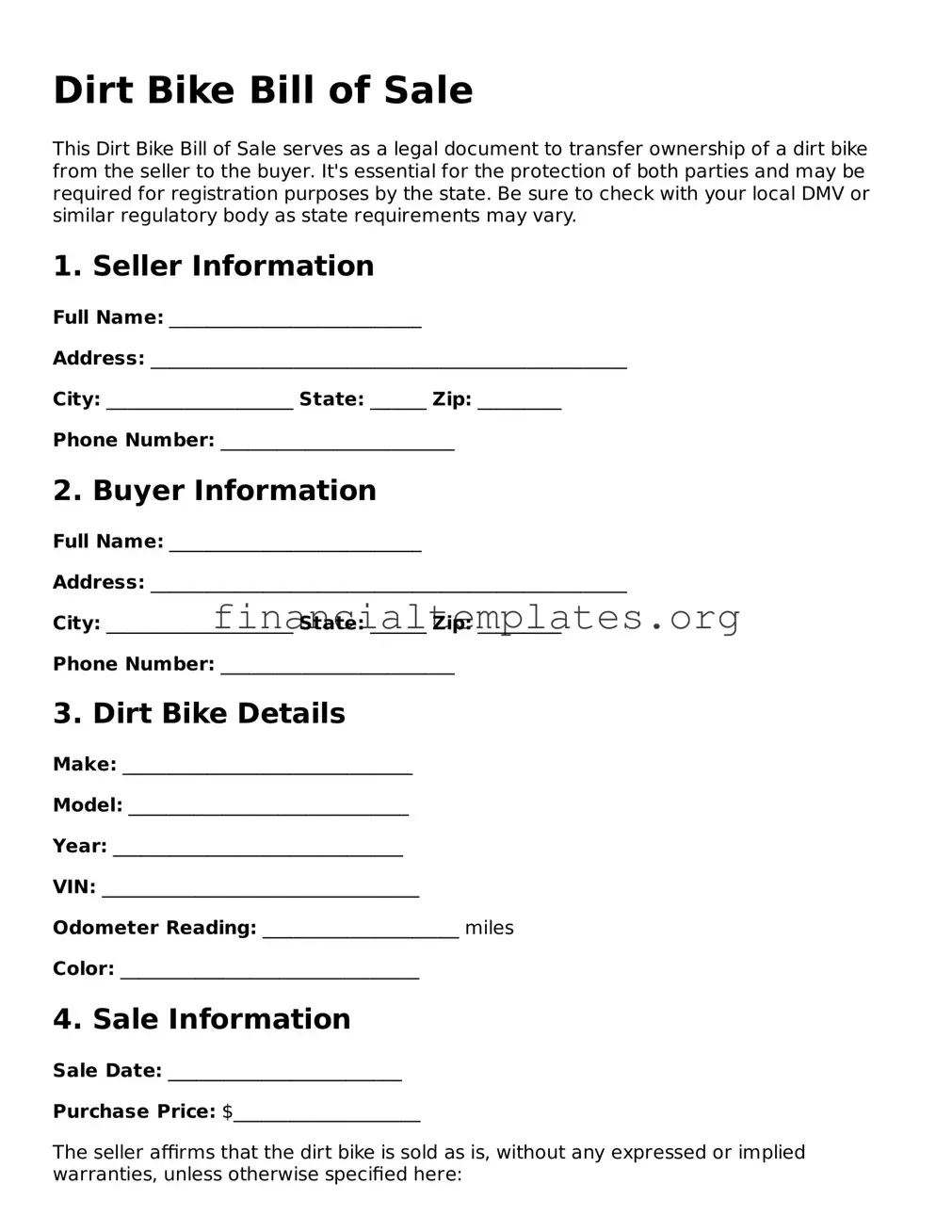Dirt Bike Bill of Sale
This Dirt Bike Bill of Sale serves as a legal document to transfer ownership of a dirt bike from the seller to the buyer. It's essential for the protection of both parties and may be required for registration purposes by the state. Be sure to check with your local DMV or similar regulatory body as state requirements may vary.
1. Seller Information
Full Name: ___________________________
Address: ___________________________________________________
City: ____________________ State: ______ Zip: _________
Phone Number: _________________________
2. Buyer Information
Full Name: ___________________________
Address: ___________________________________________________
City: ____________________ State: ______ Zip: _________
Phone Number: _________________________
3. Dirt Bike Details
Make: _______________________________
Model: ______________________________
Year: _______________________________
VIN: __________________________________
Odometer Reading: _____________________ miles
Color: ________________________________
4. Sale Information
Sale Date: _________________________
Purchase Price: $____________________
The seller affirms that the dirt bike is sold as is, without any expressed or implied warranties, unless otherwise specified here:
____________________________________________________________________________
____________________________________________________________________________
5. Seller's Disclosure
The seller affirms that the dirt bike's title is clear and the vehicle is free of all encumbrances and liens. Furthermore, the motorcycle has not been declared a total loss or salvage by any insurance company, branded for any reason, or subject to any known defects which have not been disclosed to the buyer.
6. Signatures
This document is executed in good faith by both parties. Both the seller and the buyer acknowledge reading, understanding, and agreeing to the terms and conditions outlined in this Bill of Sale.
Seller's Signature: ______________________________ Date: _________
Print Name: ______________________________________
Buyer's Signature: ______________________________ Date: _________
Print Name: ______________________________________
7. Witness (if applicable)
Witness's Signature: ______________________________ Date: _________
Print Name: ______________________________________
8. Notary Public (if required by the state)
This section to be completed by a Notary Public if required by your state.
